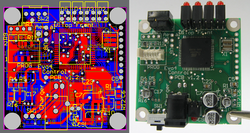IPC-2221A, as most designers know, was released in 2003. Since that time, lead-free has gone from a niche technology to a mainstream one, and its added a generous dose of complexity to the design decision tree.
In November, IPC-2221B was, at long last, released, and it’s a good opportunity to reflect on the process of how standards are developed, and why it took nearly a decade to get the latest rev out.
In that time, for example, the task group responsible for J-STD-001, the industry soldering standard, came out with a “D” and an “E” revision, and work is underway on the “F” revision. Certainly the changes lead-free brought about affected electronics assembly at least as much as design: it’s hard to pin the problem solely on technical reasons.
My experience working on the J-STD-001 suggests the difference in publishing frequency comes down to how the respective task groups call a halt to the changing technology. Going back to when Jerry Rosser was chair of the J-STD-001, for example, that group has a 15-year-plus history of calling a hard stop to new technical additions after a set period of time. Jerry knew the standards would always be disrupted by new technology, and therefore he initiated a plan — still followed — whereby after a period of months, the spec would be frozen, and the only changes from that point to the revision in progress would be to ameliorate the grammar and, on the rare occasion, fix legitimate technical disputes. If, for example, new chip-scale package requirements weren’t ready by the hard stop, they were tabled for the next rev. The ensuing document was never perfect, but it was far more timely than would have been otherwise possible. To wit, the task group published four revisions, plus one amendment, in one decade alone.
 Based on interviews with the coordinator of the IPC-2221, a different tack was taken, which slowed the process considerably. It took the task group several years before calling a hard stop. Another difference is the decision to include a fair amount of tutorial in the design standard, whereas the soldering task group stripped all that info out years ago, opting instead to segment it into a separate handbook.
Based on interviews with the coordinator of the IPC-2221, a different tack was taken, which slowed the process considerably. It took the task group several years before calling a hard stop. Another difference is the decision to include a fair amount of tutorial in the design standard, whereas the soldering task group stripped all that info out years ago, opting instead to segment it into a separate handbook.
Now, to be sure, there is a design guide, but it was published in 1992 and has never been updated. I understand the philosophical reasons for doing things the way the design task group has done them, but in the interest of faster time-to-market, I think it’s time to reconsider whether there’s a better way. Thoroughness has value. But so does expediency.
